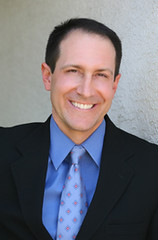Sweating is a natural process that helps our bodies to regulate temperature. However, excessive sweating, also known as Hyperhidrosis, can be quite uncomfortable and frustrating. Here’s an informative guide that explains several strategies and approaches that can help you manage and stop excessive sweating.
Before proceeding with any method, it is essential to check with a certified healthcare provider. It helps ensure that the method is safe and suitable for you, considering various factors like overall health, age and primary cause of excessive sweating.
Healthy Lifestyle Amenities
Several lifestyle modifications are effective for managing sweating. For instance, wearing lightweight, breathable clothing, particularly those made of a moisture-wicking material can help prevent sweat buildup. Avoiding spicy foods, caffeine and alcohol, which can all stimulate sweat production, is another suggested lifestyle change. Regular exercise can also help to control sweat by ensuring the body is more accustomed to heat and exertion.
Antiperspirants
Clinical strength antiperspirants are one of the most common and accessible ways to manage sweating. Antiperspirants contain Aluminum Chloride Hexahydrate, a strong agent that creates a temporary plug within the sweat glands, suppressing the release of sweat. Here, it’s essential to know the difference between antiperspirants and deodorants. While deodorants mask the smell, antiperspirants prevent sweat from reaching the skin surface.
Medical Interventions
When conservative methods like lifestyle alterations and antiperspirants fail to reduce excessive sweating, medical interventions may be necessary. The nature of these interventions might range from oral medications to surgeries, depending on the severity and the location of excessive sweating.
Intra-dermal Botox injections are a popular method for reducing sweat in problem areas like underarms, hands, and feet. Botox works by blocking the nerves responsible for activating sweat glands. Individuals generally experience a significant reduction in sweating for several months after this treatment.
IONTOPHORESIS is a treatment most commonly used for excessive hand and feet sweating. This non-invasive procedure requires the patient to place their hands or feet in a shallow pan of water while a low electrical current is passed, temporarily shutting down sweat glands.
Natural Remedies
Some individuals prefer natural remedies to medical treatments, and there are several natural ways to decrease sweating. Drinking sufficient water, consuming a diet rich in fiber, whole grains, fruits, and vegetables, and maintaining adequate hygiene can all help in managing sweat.
Tropical and homeopathic applications like herbal tea soaks, tomato juice baths, and sage are also believed to help reduce excessive sweating symptoms.
In conclusion, the methods to stop excessive sweating range from simple lifestyle modifications, over-the-counter antiperspirants, medical treatments, to natural remedies. But remember, everybody is unique, and the method that works best for someone else might not be the best for you. Hence, seek advice from a healthcare provider before you choose a method to tackle excessive sweating.

